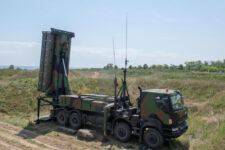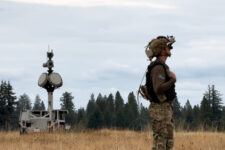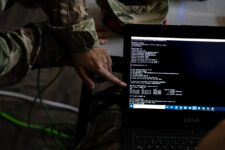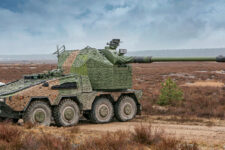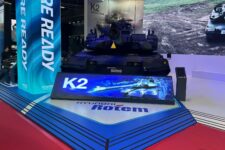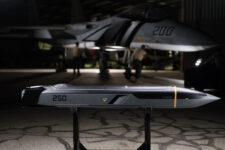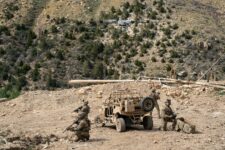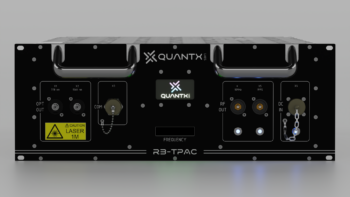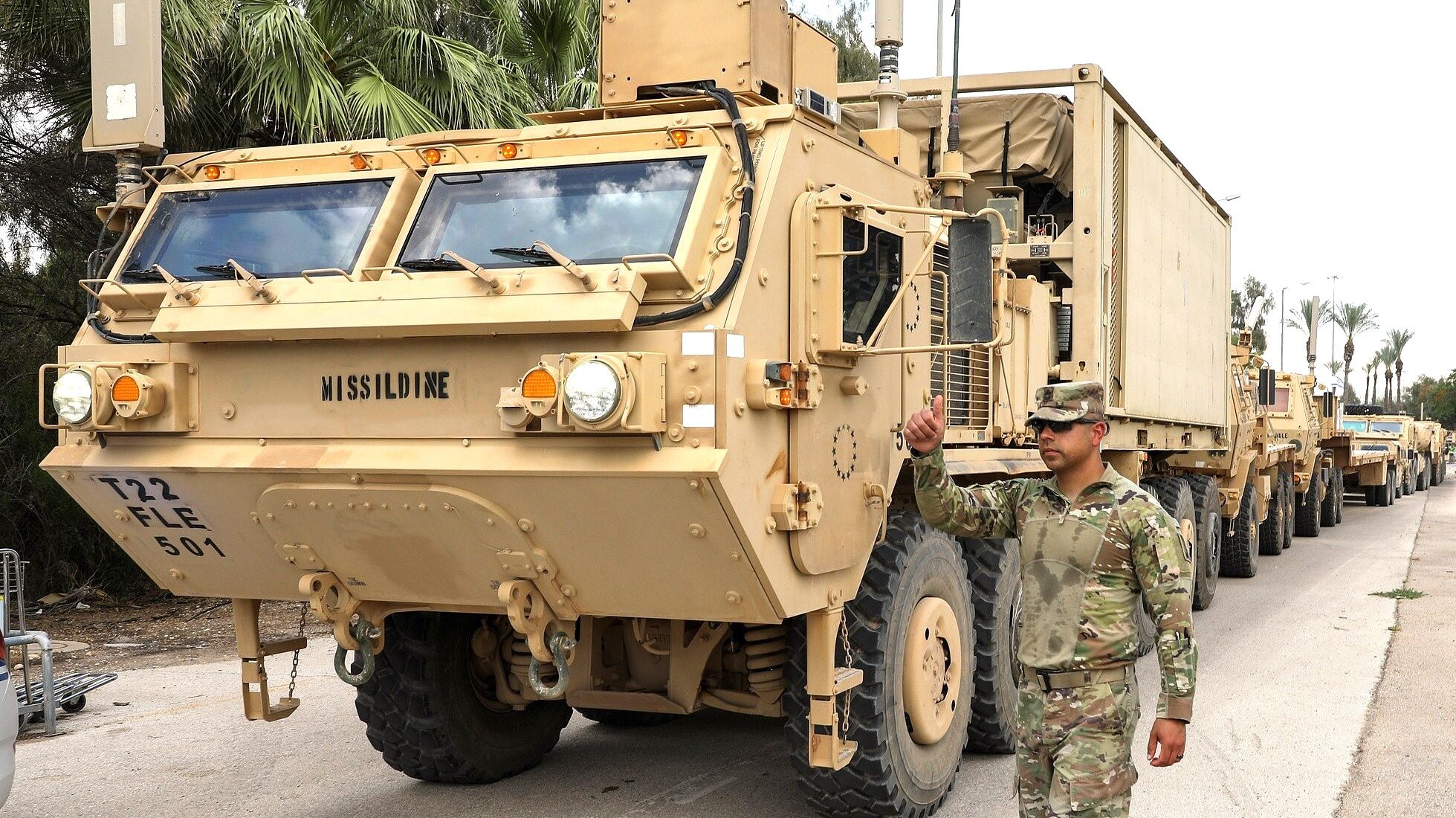
A US Army convoy enters the city of Beit She’An, Israel, in 2023. (US Army)
GVSETS 2024 — Although the US Army envisions an uncrewed future for part of its ground fleet, integrating autonomous systems into its formations has been a challenge — one that cuts across software, communication and mobility.
The good news is that the Army is aware if it wants to reach the potential of its combat robot dreams, it needs to make changes. Speaking Tuesday at the 16th Annual Ground Vehicle Systems Engineering & Technology Symposium (GVSETS) in Novi, Michigan, officials made clear they are open to ideas that will help.
From the software perspective, Col. Ken Bernier, project manager, Future Battle Platforms, Program Executive Office Ground Combat Systems (PEO GCS), pointed out that the service needs “to be making decisions earlier to ensure the long-term viability of whatever program or platform we are delivering.”
Added Bernier, “it is probably not hard to think about it as we iterate when we do more and more robots. The one common thread may be the software that keeps them all working together.”
Leland “Kent” Shea, Product Manager, Robotics & Autonomous Systems, PEO CS&CSS, stressed that improving algorithms must be a continuous effort: “I don’t think software [improvement processes] ever stops. It is very different to sustain than other things.”
One key issue that needs updated software is mobility — in particular obstacle detection and avoidance. Preparing its uncrewed fleet to travel at speeds that maintain pace with manned platforms in difficult terrains is also a concern as the current UGVs would slow down convoys putting them in risky positions. (Breaking Defense recently outlined a number of these issues in a two part series focused on the Army’s Robotic Combat Vehicle program.)
“We want to have our soldiers be able to push [uncrewed] capabilities out, either ground, air, whatever, and be able to do that in some autonomous fashion”, Robert Monto, Director, Advanced Concepts and Critical Technologies, US Army Rapid Capabilities and Critical Technologies Office (RCCTO) claimed.
Another issue to be addressed is ensuring those systems can access networks and safely communicate and operate without enemy interference. In order to protect those platforms from cyber intrusions, the branch plans to deepen its cooperation with industry.
“If I learned anything about cybersecurity or just program management, it is not if [a cyberattack happens], it is when [it will happen] and what do you do about it?” Bernier said. He noted that cyberattacks will certainly happen, and the Army will have to rely on the industry to provide solutions.
The constant addition of new capabilities over the lifecycle of the unmanned ground platform is another concern since the Army’s fleet must be prepared to face current and future threats. In this regard, the Modular Open Systems Approach (MOSA) has been increasing in importance.
Apart from accelerating updates of the systems and modernization processes, a modular approach can also open up the maintenance plan for parts and technologies from diverse vendors.
“If we strategize and keep the competition as part of our long-term [programs], that [MOSA] is only going to help us, and allow us to take advantage of those [software] that are continuing to make decent balance,” Shea said.
And of course, it wouldn’t be a litany of challenges for a military procurement program if there wasn’t talk about how the bureaucracy involved in acquisition and development slows the implementation new technologies.
That’s not news to industry. Warren Sponsler, chief operating officer of the National Advanced Mobility Consortium (NAMC), told Braking Defense that “based on a lot of hard lessons learned, the DoD, by its nature, is very risk averse” and “has instituted, in many cases, some processes to help guard against some of those risks.”
And Jim McManus, the chair of GVSETS, told Breaking Defense that “it is frustrating for some commercial companies that don’t play in the defense market because the contracting mechanisms are really rigorous.”
The DoD, its services and its agencies have been increasing the use of Other Transaction Authority (OTA) obligations to speed up contracting processes and acquire commercial solutions from non-traditional defense suppliers. In McManus’ opinion, the integration of commercial technologies in uncrewed vehicles will be crucial to maintain “the Army’s ability to expand capabilities on current vehicles and future vehicles.”
As OTAs are non-standard procurement efforts, they generally are not subject to the federal laws and regulations involved in traditional defense acquisitions. Still, there is still room for improvement in this process.
From Sponsler’s perspective, small businesses and commercial suppliers can ease those barriers by partnering with other defense companies. “They don’t have to go through the whole process of bidding for a contract from zero,” he said.
